Having visited Helsinki Central Station, nearby shopping streets and the cathedral, our mystery family will have made their way back to the ferry at Satama, pausing to have their photograph taken beside the distinctive dockside building below.
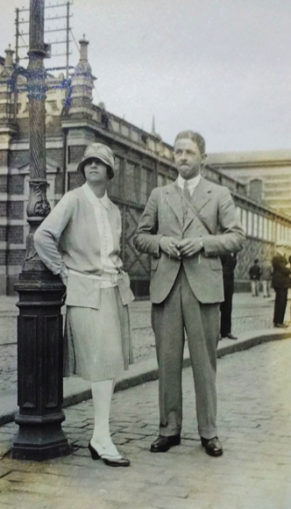
© AlwaysWorthSaying, Going Postal 2021
This is the instantly recognisable Vahna Kauppahalli. It is still possible to stand on this very spot 100 years later via the miracle of Street View. Note the cathedral to the right of the building. If you do a pirouette you’ll see where our mystery family’s mystery ship was likely tied up.
The Vahna Kauppahalli is a traditional 19th-century venue featuring shops and stalls offering unique Finnish specialities. Appropriately, Vahna Kauppahalli translates into English as ‘Old Market Hall’.
Opened in 1889, the Gustaf Nyström design is located on the South Shore of Helsingin Satama near Market Square and is the oldest of the city’s market halls. Although Nyström has the neo-renaissance and national romantic styles attributed to him, I can’t quite see it myself and would classify this effort as an over-fussy Victorian provincial tram shed.
Today, the hall remains a popular tourist attraction with about 25 different stalls and cafes offering mainly food produce. The building was renovated between 2012 and 2014 but retains the red tile floors and iron grates visitors in the 1920s would have trod, no doubt in those days amongst the blood, guts and seawater of a covered dockside wet market.
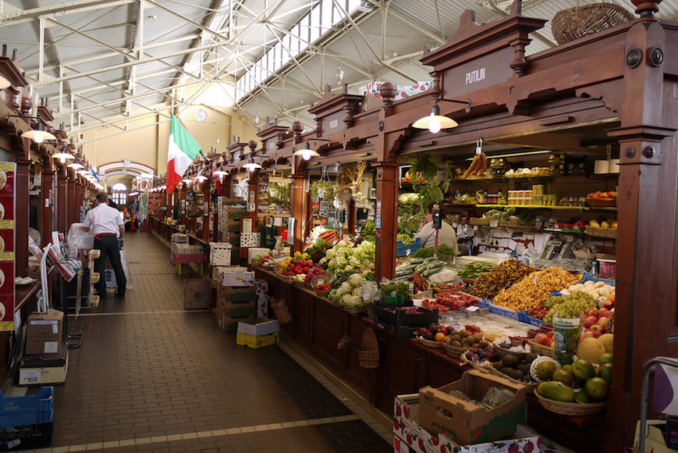
Old Market Hall – Vanha Kauppahalli, Helsinki,
Discovering Finland – Licence CC BY-SA 2.0
A look at the name above the shutters closest to the camera appears to show Putin’s fruit and veg stall. The guy’s a legend.
All well and good, but how did our mystery family get there and back on this particular part of their mystery adventures? An East of England theme has developed throughout these photographs with trips to Yorkshire’s Swaledale, the Stockton & Darlington Railway and a wherry holiday in East Anglia’s Norfolk boards.
Remaining in the area, not only were there direct 1920s sailings to Finland, but these were a bit of a ‘thing’, oft referred to by between the wars wags as a cruise around the Northern Mediterranean. One such cruiser was Alexander MacCallum Scott who not only served for 12 years as Liberal MP for Glasgow Bridgton but wrote a book about his travels prior to entering parliament. Although set a decade or so before our mystery family’s mystery trip, his work Through Finland to St Petersburg is enlightening. [1]
Scott travelled with the Finland Steamship Company and writes of their weekly run between the East Riding’s Hull and Finland’s Helsinki. The North Sea was crossed in 32 hours before shelter was found amongst the island-dotted coasts of Denmark and Sweden. He recalls the ferries as comfortable and luxuriously fitted, crewed by Finns who had served on British vessels and who spoke perfect English. He was particularly over-excited by the food, then as now, administered from a smörgås bord,
There are smoked salmon, pickled herring, sardines, anchovies, slices of hard-boiled egg, smoked eels, caviare, sausages, salads and pickles in great variety, custard, meatballs, cheese, butter, and great piles of cut bread (white and black), and a hard crisp cake (knäckebroa), somewhat like oat-cake. At the end of the table is a large urn with taps which yield various liqueurs.
He also reminds us of the habit of picking at the smörgås table before being seated for the first course proper. Sadly, first time out, ‘a friend’ of Mr Scott was socially embarrassed by pulling up a seat to the smörgås bord and tucking in after assuming that was the whole meal.
Such sailings were advertised by postcard and wall poster with Hull artist Harry Hudson Rodmell providing the artwork. Here is his poster for the Finland Line showing Helsinki cathedral in the background. Note the need for the use of a shipping agent, in this case, John Good and sons of Hull. Here he advertises the routes to Tallinn, Stettin, Copenhagen and Stockholm.
Born in Hull, Rodmell studied at the Hull School of Art and Design and during the First World War served as a draughtsman and lithographer in the Royal Engineers. Between the wars, he worked as a poster artist, founded the Society of Maritime Arts and was exhibited at the Royal Academy. In World War Two, he served in the Royal Observer Corps after which his work was largely, but not exclusively, oil painting commissions of new vessels. These included Royal Scotsman and HMY Britannia pictured next to HMS Malcolm.
A good egg, Harry Hudson Rodmell died in 1984, aged 88. As we shall see, Alexander MacCallum Scott was not to be so fortunate.

Alexander MacCallum Scott,
Unknown – Fair use as per wikicommons
After Glasgow University (a contemporary of Thirty Nine Steps author John Buchan), Scott became a journalist and writer in London. As well as Finland, he visited Russia and Siberia for the Daily Chronicle before embarking upon the study of law. After being called to bar in 1908, he entered parliament in 1910 and served a 12-year stint as MP for Glasgow Bridgeton. During World War One, MacCallum Scott was a parliamentary private secretary to the Ministry of Munitions. In the 1922 general election, Glasgow Bridgeton was taken for the Labour Party by Pollockshaws born school teacher’s son James Maxton. A trouble maker, pacifist, republican and so-called ‘Red Clydesider’, Mr Maxton was a thoroughly bad egg.
On the ballot paper, Mr Scott’s address was given as 110 Cheyne Walk, London, not necessarily helpful when placed before a Glesga electorate. His profession is declared as ‘barrister’ to Mr Maxton’s ‘secretary’, likewise not always a vote winner.
After losing the seat, Scott left the Liberal Party, joined Labour in 1927 and was appointed as a prospective parliamentary candidate. However, his ambitions were dashed in the summer of 1928 when he perished in an aviation accident while flying between Victoria, British Columbia and Seattle. His diary was found on the shores of Discovery Bay on the 29th August[2]. The next day, Mrs Scott’s body was washed ashore and a week later her husband’s remains were found in the wreckage of a plane that had been towed into Puget Sound. He was 54.
A thoroughly good egg, as well as his travel books, in both 1905 and 1916 he had biographied Churchill and, despite being a Liberal, wrote two volumes on behalf of the National League for Opposing Woman Suffrage.
Distracted by a detailed description of the smörgås board, Scott omitted to mention the name vessel he travelled on. Despite, as we shall see, ample onboard photographic evidence, neither do we know that of our mystery cruising family.
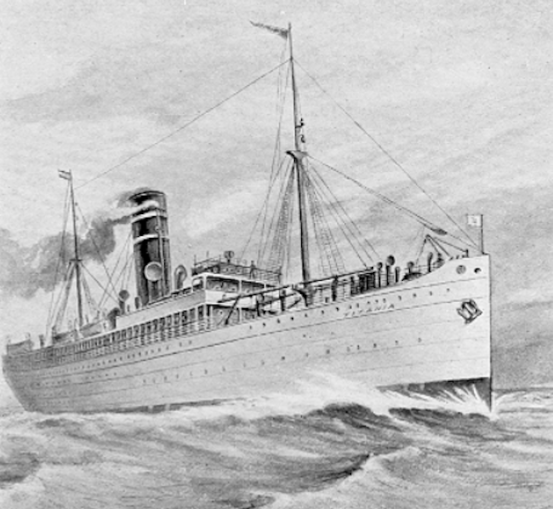
S/S Titania,
Axel Söderlund – Licence CC BY-SA 2.0
We might speculate Scott voyaged on the SS Titania which sailed that route with 98 first-class, 62 second-class and 550 emigrant-class (Scandinavia to America) passengers. The emigrants were offloaded at Hull, taken by train to Liverpool and embarked on another vessel to cross the Atlantic while the Titania made a return trip to Helsinki.
Our mystery family can’t have been travelling on the Titania as she was sunk by a U-boat off Aberdeen during the First War. Another possibility might be the SS Oberon that survived through the 1920s but was sunk on 19th December 1930 after colliding with sister ship, Arcturus, in the Kattegat.
Oberon was a 3000-ton, 336 passenger vessel, built in 1925 by S. A. des Chantier & Ateliers in St Nazaire and would be brand new-ish at the time our photos were taken.
Kattegat lies between Denmark and Sweden, north of the Oresund pinch point separating Helsingør and Helsingborg which we visited with the Copenhagen and Gotland photos. The collision took place in fog with the Oberson on route to Hull. The ship sank in three minutes with the loss of 25 crew and 17 passengers with another 36 souls being saved by the Arcturus.
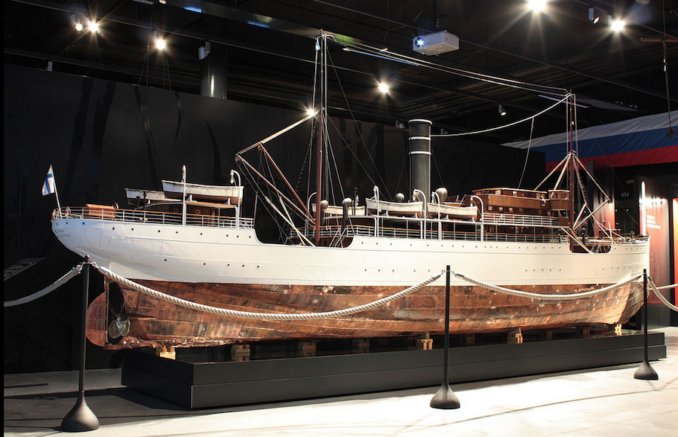
A model by Tomi Isopahkala of S/S Arcturus ,
Matti Paavola – Licence CC BY-SA 3.0
The SS Arcturus herself might be another candidate. The 2000 ton, 3000 horsepower vessel was built in 1898 by Gourlay Brothers of Dundee. Firstly taking immigrants from Finland to America, later she sailed from and to Copenhagen, Helsinki and Hull.
Carrying 67 first and 72 2nd class passengers, she fared better than the Oberon and was in service for 57 years, despite being damaged in a Soviet air raid on Turku in 1940. Her final voyage was was to Antwerp in 1956, from where she was taken to Lübeck to be scrapped.
Your humble author doesn’t know much about ships other than that they have a blunt end and a sharp end are wet on the bottom and dry on the top. But comparing Arcturus to the album photographs below, she doesn’t look long enough or have those large round portholes.
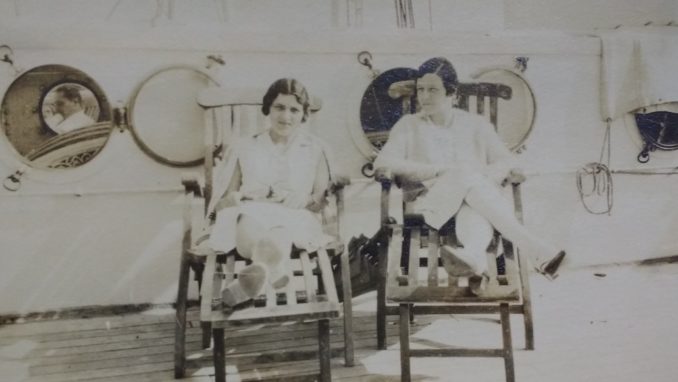
© Always Worth Saying, Going Postal 2022
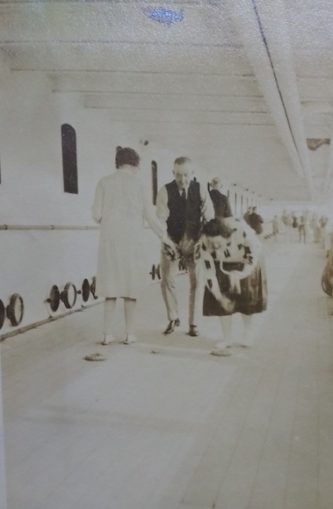
© Always Worth Saying, Going Postal 2022
In the summer sailings list for 1924, the Astraea is mentioned as another Finland Line vessel on the Hull – Helsinki route. Built on the Tyne at Neptune Yard, Low Walker, she looks too small to be our mystery album family’s transport. With accommodation for only 50 people, she was built in 1891 and in 1930 was converted to a mother ship for fishing vessels in Icelandic waters, serving only a few years there before being broken up in Sunderland in 1936.
Looking at the rest of the old photos, our mystery vessel is long with two upper decks. The lower has square windows and small low portholes, presumably to let some light and air into the immigrant deck. The upper enjoys distinctive round, large portholes. All is white. It’s difficult to match these with any of the Finish Line vessels, however, there were other companies operating between Hull and Helsinki and we will take a look at them next time on Mystery Album.
References & Acknowledgements
[1] via the Things I Enjoy Blogspot
[2] The Blantyre Project
Ships of The Finland Steamship Company
Come to Finland website
© Always Worth Saying 2022



